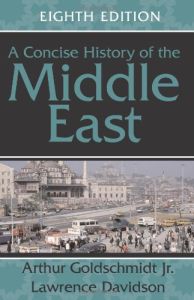Join getAbstract to access the summary!

Join getAbstract to access the summary!
Arthur Goldschmidt Jr. and Lawrence Davidson
A Concise History of the Middle East
Westview Press, 2005
What's inside?
The cradle of civilization was never peaceful. Problems that festered in the Middle East for centuries remain unresolved.
Recommendation
At more than 500 pages, this textbook is not exactly "concise," as might be expected given the panoramic scope of its topic. Arthur Goldschmidt Jr. and Lawrence Davidson ambitiously try to explain the factors driving Islamic culture and its influence on Western civilization, right down to the glossary and chronology. Their main focus is the impact of Islam on Arab history. Once they reach modern times, the authors’ strong views shape their explanations, sometimes pushing the book toward commentary rather than history. Some readers may find that their interpretations can be partisan (anti-Bush, pro-Palestinian, accusing the U.S. of terrorism), but such continuing controversies are inherent in Middle East history. As the authors correctly point out, today’s society offers no solutions to many of these critical issues, most of which have festered for centuries. To draw the most from its strengths, getAbstract recommends this major sourcebook primarily to those who are interested in premodern Middle East history.
Summary
About the Authors
Arthur Goldschmidt Jr. is professor emeritus of Middle East history at Pennsylvania State University. He wrote Modern Egypt: Foundation of a Nation-State. Lawrence Davidson teaches history at West Chester University. He is the author of several books, including America’s Palestine and Islamic Fundamentalism.

















Comment on this summary